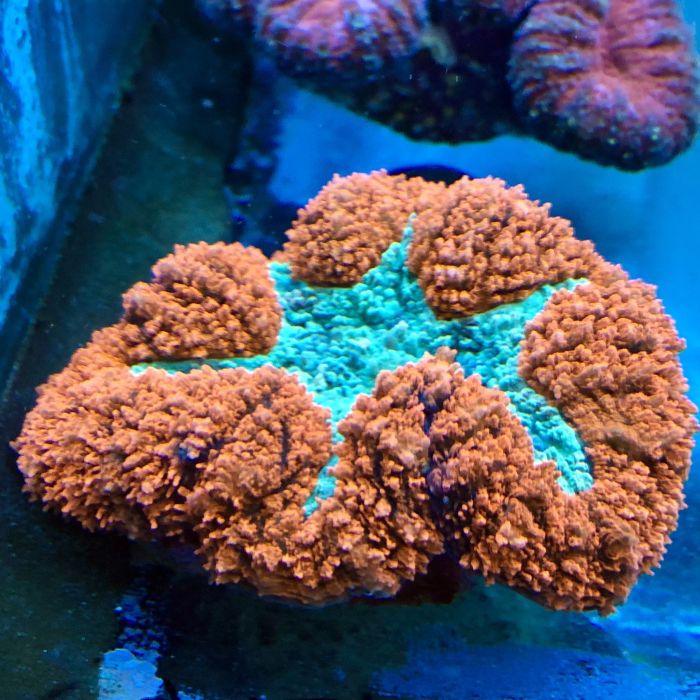Brain Coral - Symphyllia (Ultra)
This coral receives most of its energy by utilizing the photosynthetic algae contained within its tissues. It will benefit from occasional feedings of meaty foods such as mysis shrimp, enriched brine shrimp, chopped krill, pellets, etc. Some corals may also respond to phytoplankton. Its transparent feeding tentacles extend mainly at night, although it can learn to feed during daylight hours.
Open brain corals are able to expand their tissues to a surprising size, and are often called Meat corals. They thrive under dim to moderate light, and may be damaged by intense illumination. They are often nipped on by fish, especially angelfish. Many open brains are sensitive to the chemicals released by soft corals, such as leathers, lemnalia and mushrooms; the use of carbon filtration (changed frequently) and regular water changes can minimize this.
Space should be provided between corals to allow for growth and expansion; although open brain corals possess feeding tentacles they are prone to being stung and damaged by neighboring corals.
The sinuous folds of this captivating brain coral are like winding mountain ranges separated by wide valleys. It is also known as Dented brain coral, as atop each fold is a small dent where its two coralites are fused underneath. It is very similar to the Lobophyllia brain. A wide variety of textures are possible; sometimes the coral is smooth, other times appearing very rough. Ultra Australian specimens are always vividly colored and are more rare and impressive than those from other locations.
Water flow is best provided as turbulent flow with the use of a wave maker or surge action. Constant laminar flow is very damaging and could cause death of the coral. Alkalinity, calcium, magnesium and strontium are required for growth and should be checked regularly.
- Difficulty: Intermediate
- Growth Speed: Slow
- Lighting: Medium - High
- Average Placement: Low
- Water Flow: Low - Medium
- Temperament: Semi-Aggressive

